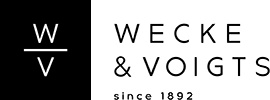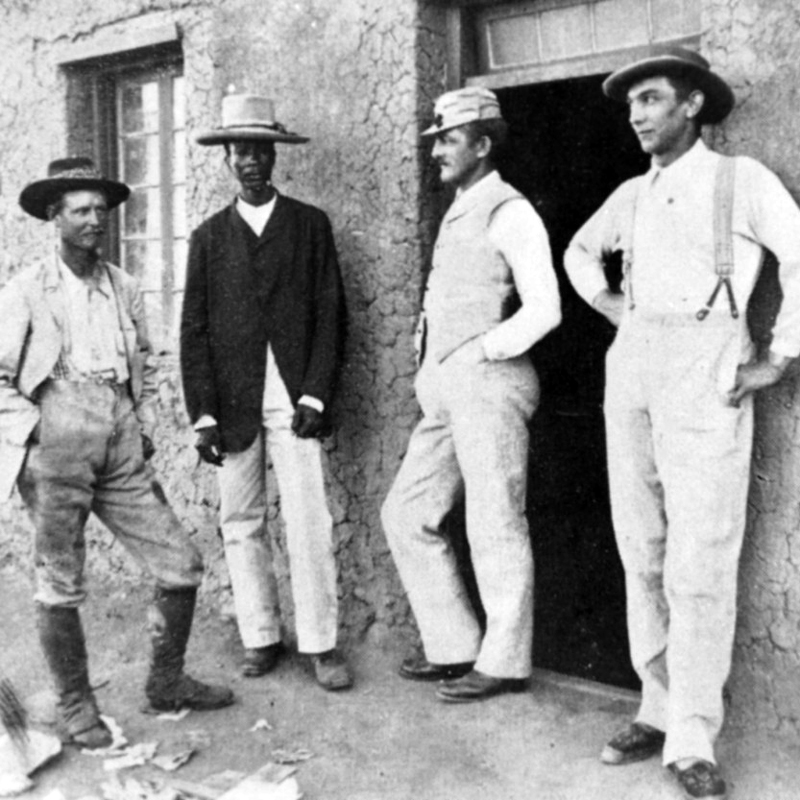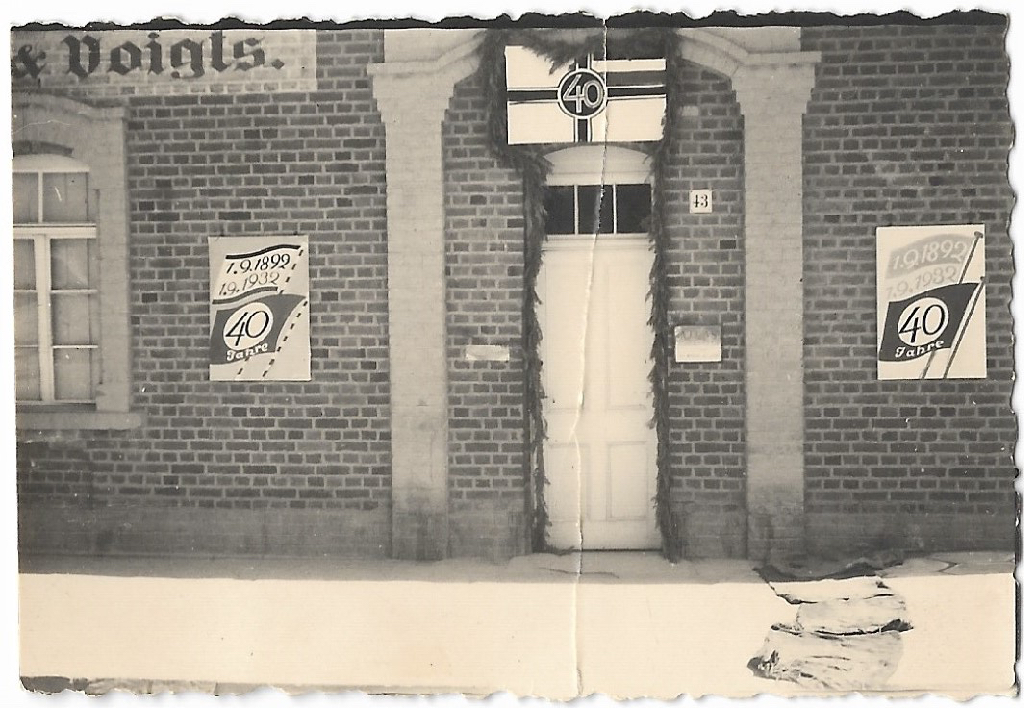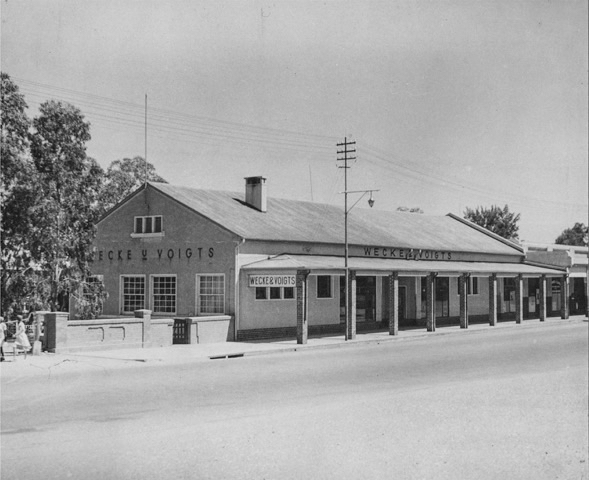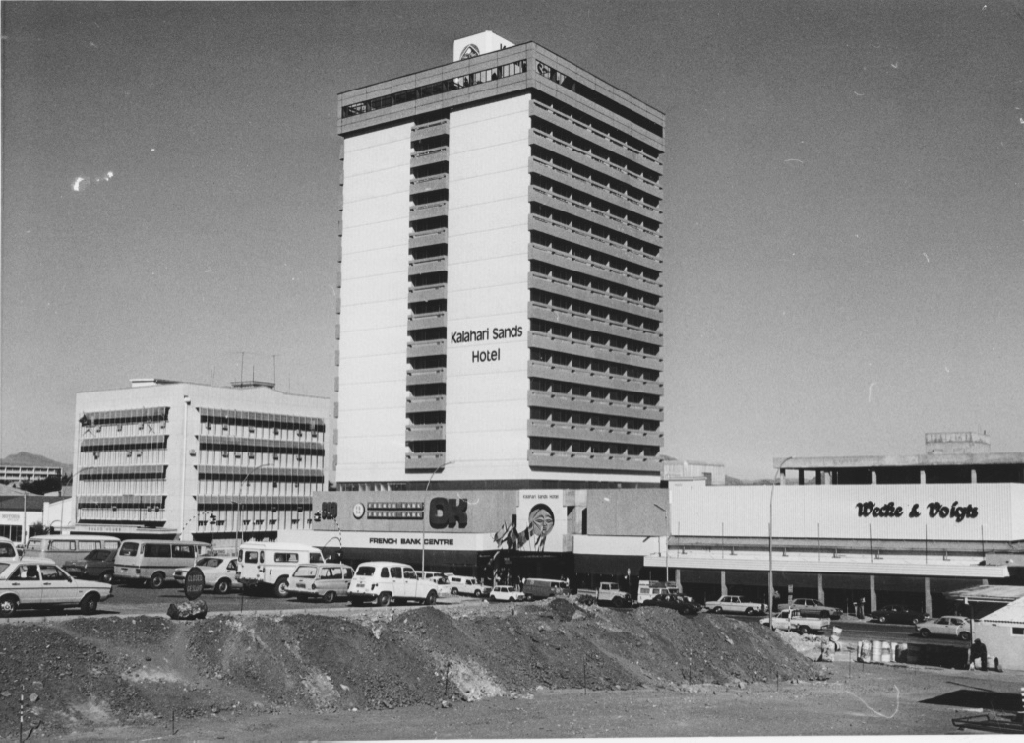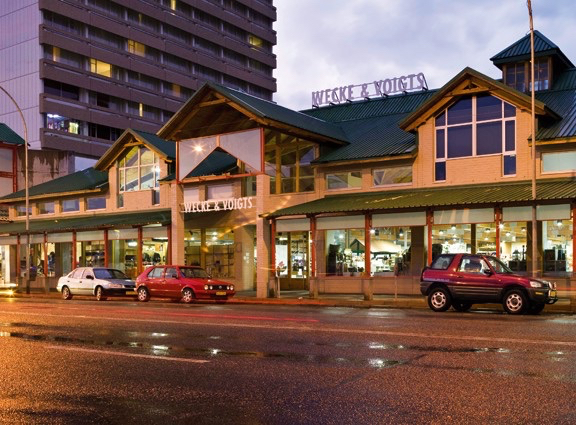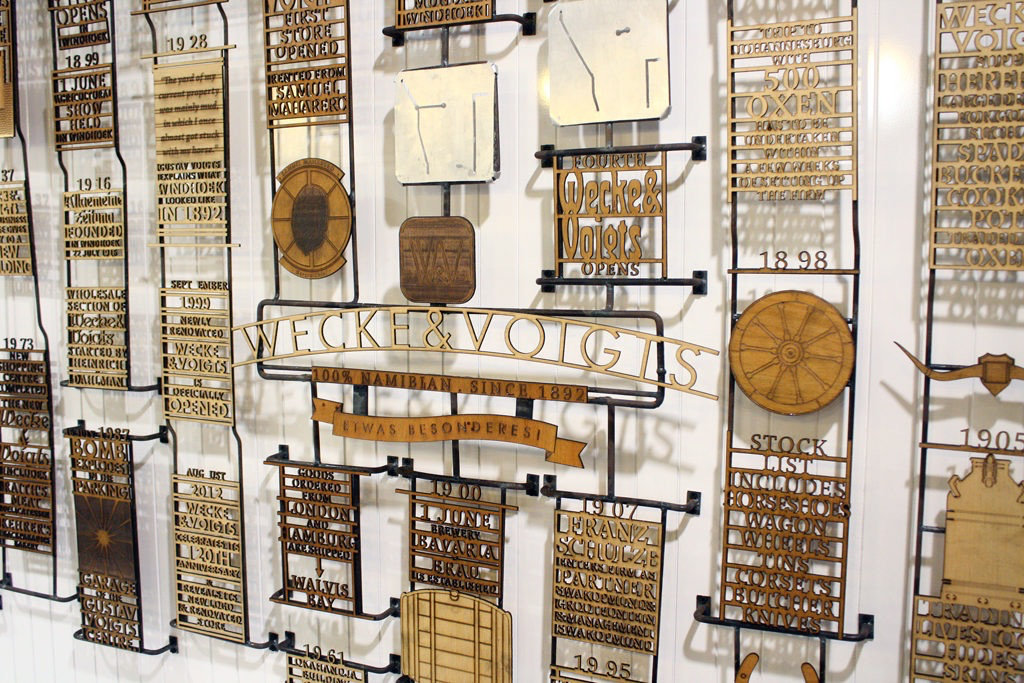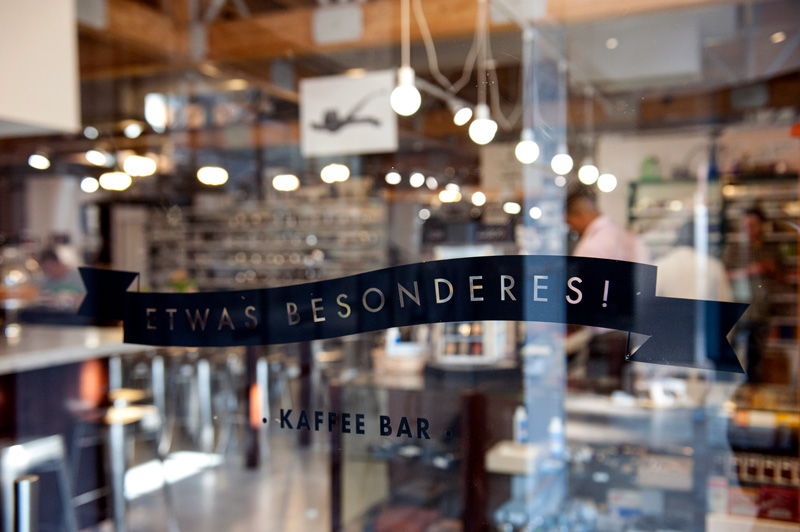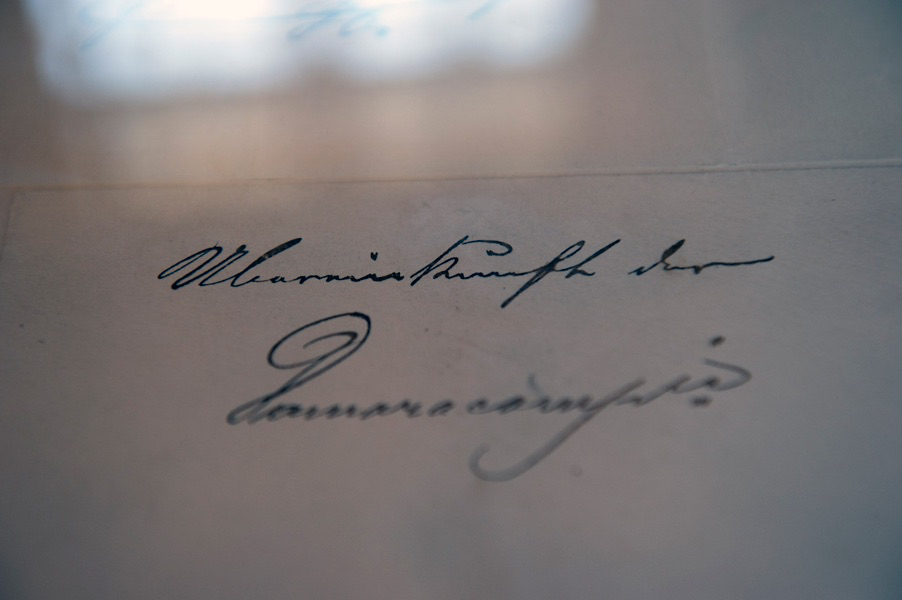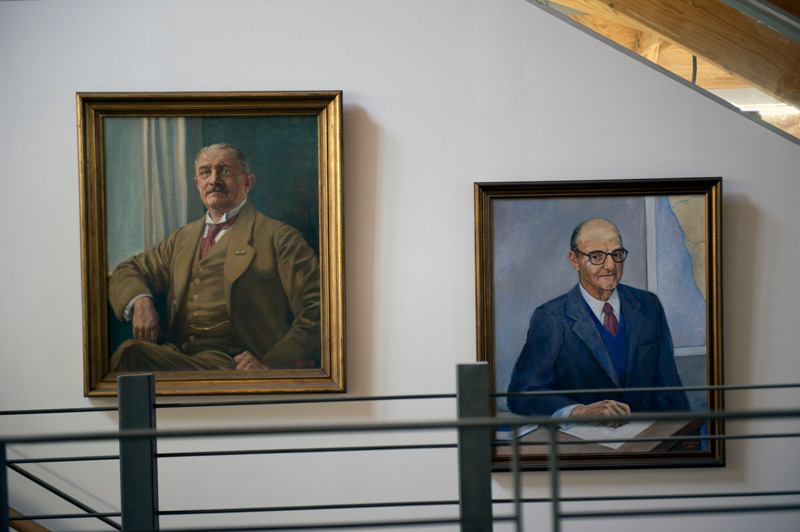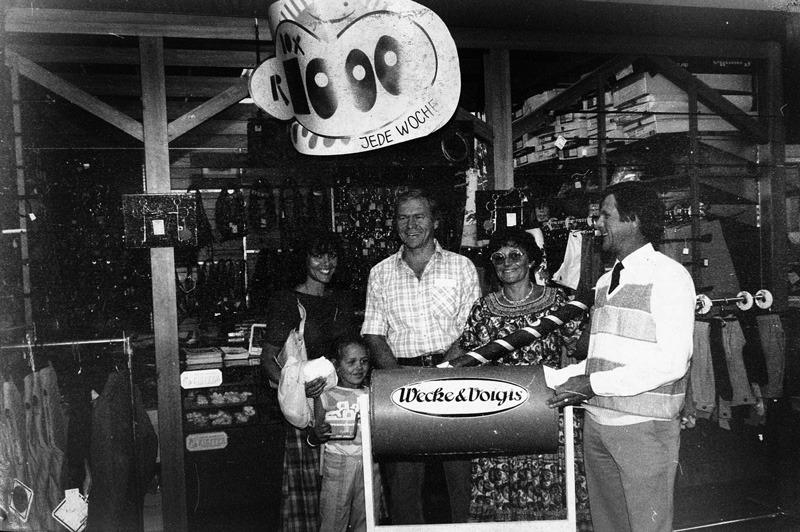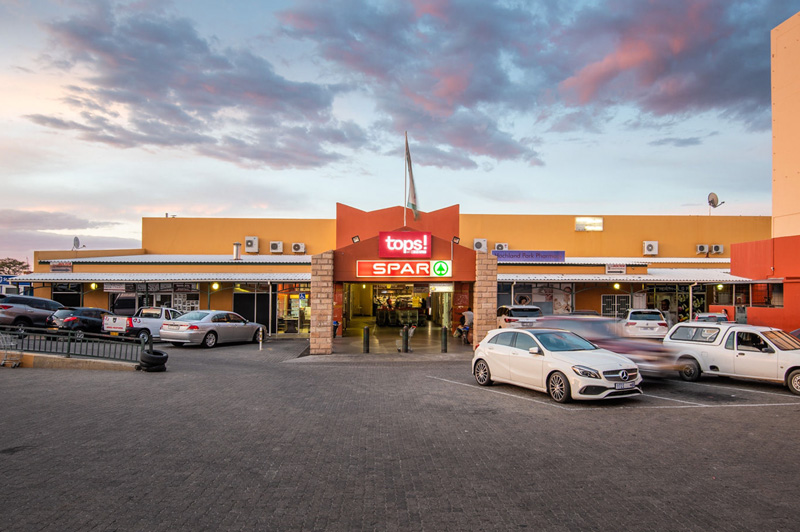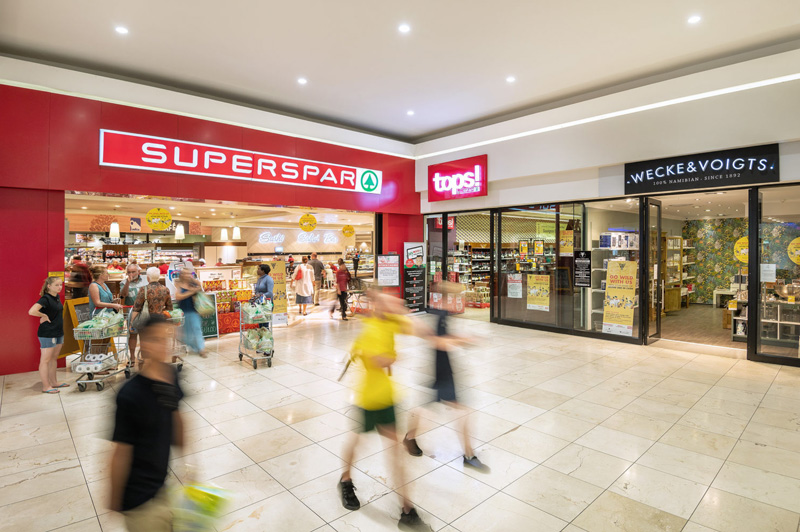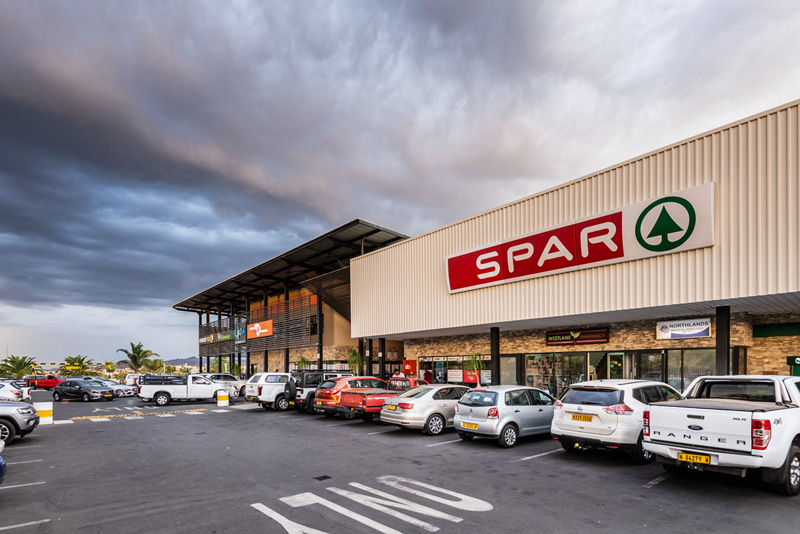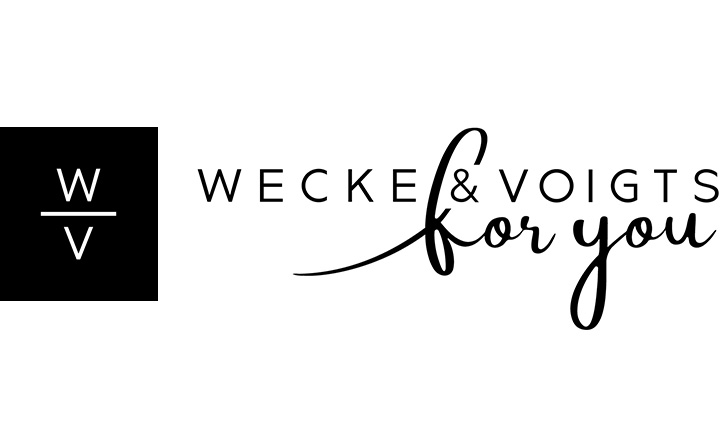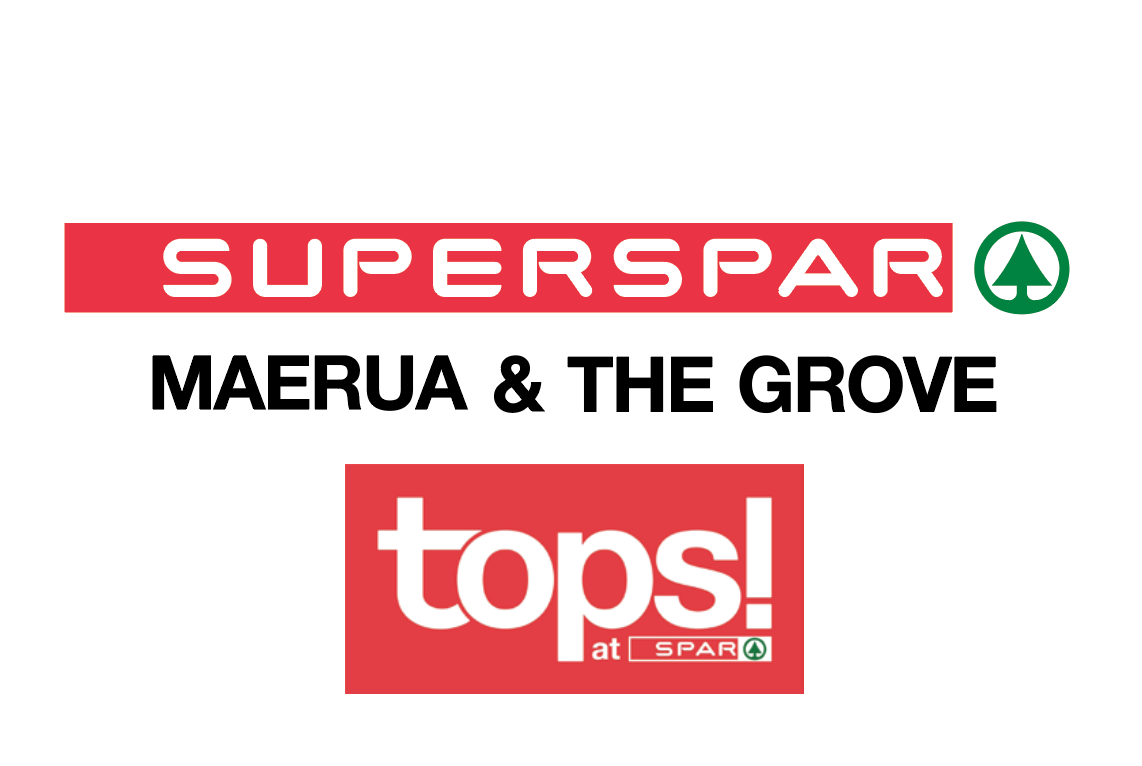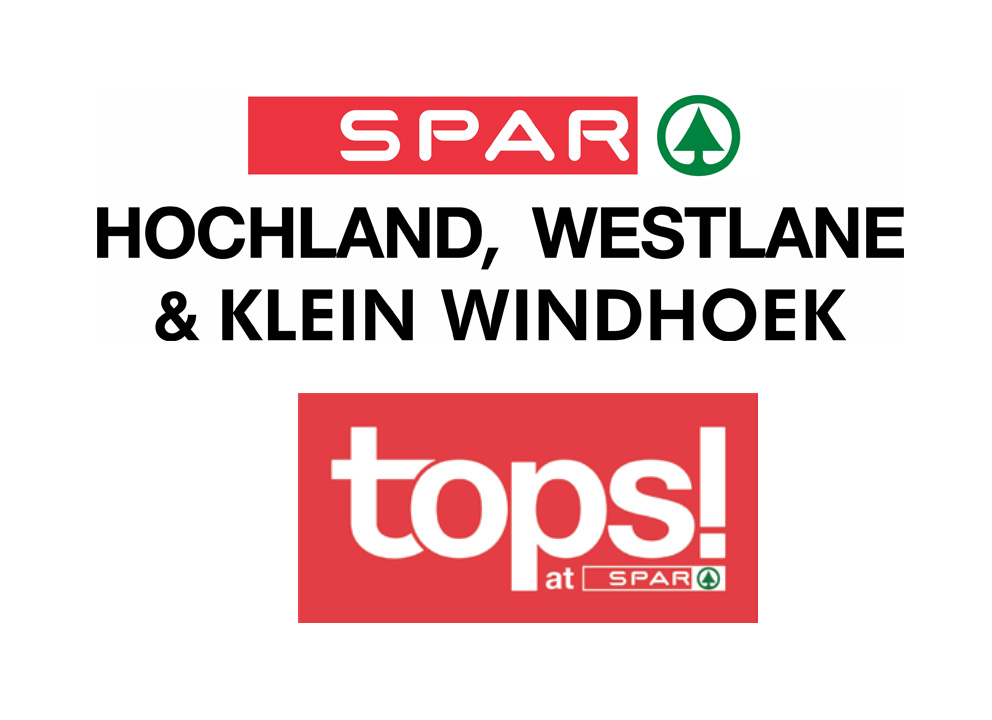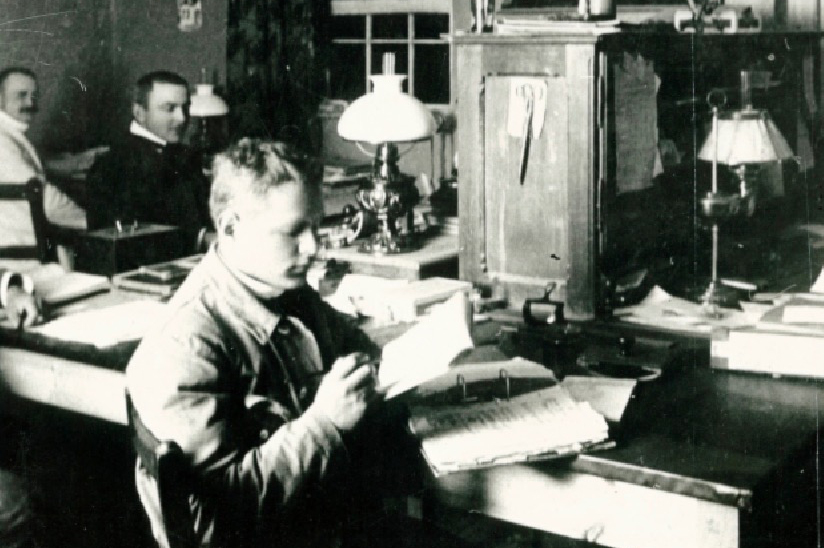

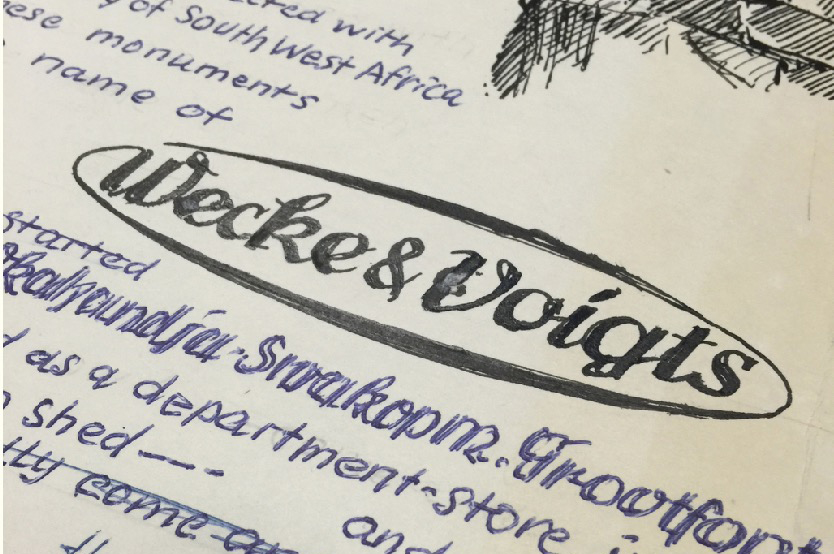
SINCE 1892
When Wecke & Voigts celebrated its 125th anniversary in 2017, customers as well as retired and current employees shared loving memories of a bygone era. Heartfelt stories sprouted from fond memories of playing in the shed behind the store amongst the karakul wool as children, to the memory of the enticing smell of coffee drifting in the old Store Strasse, and the gentleman nature of Dieter Voigts. The history of Wecke & Voigts is the story of its people, which is why it has turned into a household name.
The company’s origin begins in 1892 when two brothers, Gustav and Albert Voigts from Brunswick in Germany, together with their business partner Fritz Wecke, first arrived in Namibia. Their original trade post saw its humble beginnings in Okahandja from where they mainly exchanged goods for cattle. This trade consisted of long and arduous trekking expeditions in harsh conditions with 500 to 700 animals at a time between South Africa and Namibia.
In 1895, the partners with a keen eye for business, opened a second store in Windhoek, exactly where the bustling Gustav Voigts Centre is located today in Independence Avenue. Wecke & Voigts mostly supplied goods to farmers, but as the company grew, so did its range of customers and products.
On an agricultural front, the brothers have received several prizes for horse breeding, cattle breeding, karakul wool, ostrich feathers, Angora goats, and mules. They became the first karakul sheep farmers in Namibia and Wecke & Voigts thus became the first to export karakul wool. The family was prominent landowners – Voigtsgrund saw the construction of a European mansion that became one of the economic, cultural and political centres of South West Africa at the time, while Voigtskirch was the first dairy farm in the country.
Although the brothers opened stores in other towns, by 1965, Wecke & Voigts was completely focussed on expanding in Windhoek only.
1865 – Gustav Voigts born.
1869 – Albert Voigts born.
1872 – Richard Voigts born.
1889 – Gustav Voigts goes to Chile.
1890 – Albert Voigts arrives in South Africa from Germany and becomes Fritz Wecke’s assistant. Wecke owns a trading station at Schweizer-Reneke, situated on a crossroad between Kimberely and Johannesburg.
1891 – Albert Voigts is sent to Damaraland, South-West Africa by Fritz Wecke on a trading expedition as good oxen has been seen coming from this area.
1892 – Gustav Voigts follows younger brother, Albert, to the Transvaal.
June – With two new ox wagons and 20 oxen each Albert and Gustav Voigts set off to South-West Africa. They also have seven horses and a plough which were part of the other wares, intended for the Baster farmer Adriaan Beukes of Rehoboth, who was also meant to have fresh oxen ready for the last stretch to Okahandja.
The route taken foes from Schweizer-Reneke to Okahandja went via Taungs, Kuruman, along the Molopo River via Rietfontein to Mariental and via Rehoboth and Windhoek to Okahandja. This takes approximately 2 months.
September 3 – “It shall be called Wecke and Voigts” replied the brothers Voigts when asked by Mayor Curt von Francois what the name of the firm will be called that they plan to set up in Okahandja.
A house is rented for 40 Marks from Chief Samuel Maharero(Herero Chief) which is the location of the first store.
The goods ordered from London and Hamburg is shipped to Walvis Bay and large ox-wagons haul the items to Okahandja, situated 270km / 168miles East of the harbour town. The route taken goes along the old Bay Road via Barmen, Otjimbingwe, Usap, a 60mile waterless trail to Sandfontein and on to Walvis Bay and back again.
The goods are easily sold to the Herero and traded for oxen. The demand for even the most primitive goods, such as spades, buckets, cooking pots is incredibly big. The first trip to Johannesburg with 500 oxen has to be undertaken within a few weeks of setting up the firm.
1893 – The third brother, Richard Voigts arrives in SWA and joins the firm.
1894 – W&V opened in Windhoek.
Fritz Wecke gives up his interests in the Transvaal and opens another W&V in Swakopmund.
1895 – Gustav Voigts buys his first farm Voigtsland from the German Government.
1896 – W&V imports the first angora goats in Namibia from the Cape Colony.
Voigts brothers start farming with merino sheep imported by the German Government from Australia.
1897 – Business based largely on oxen badly disrupted by Rinderpest (cattle plague)
Gustav Voigts buys second farm, Voigtskirch from Samuel Maherero.
1898 – January 1 – W&V own stock to the total value of 144 555.21 Mark. This consist of furniture, skins, stationery, horseshoes, wagon spares, shoes, building material, tinned goods, liquor, flour, jackal skins, saddles, trowels, schnapps-glasses, tinned onions, cocoa in tins, stirrup leathers, butcher knives, corsets for ladies.
Early 1900’s – Trade with other livestock, hides, skins, dairy products which led to American dam building equipment, South African windmills, German veterinary instruments, steel wire fencing, as well as other agricultural implements.
cosmetics. The assortment changed continuously in terms of market and trading developments with new opportunities taken, as the QUEENSPARK franchise in 1997.
1903 – Youngest brother Otto Voigts comes to SWA and enters farming
1904 – 1907 – Herero Uprising – Everything is lost except buildings in Windhoek and Swakopmund. The buildings at Okahandja, Otjozonjati, Otjosazu and Waterberg are looted and burned to the ground, all the cattle and sheep are stolen, the farm houses are devastated and almost 20 workers and assistants are brutally killed. W&V faces financial ruin.
1904 – April – Albert Voigts travels to Germany as part of a preliminary compensation commission in order to obtain compensation for war damages suffered by German farmers from the Reichstag.
1906 – Albert Voigts leaves firm to devote himself to his farming and live on his farms Voigtsgrund.
1907 – Franz Schulze enters firms in Swakopmund and Grootfontein as a partner and takes over the management of the Swakopmund branch.
Alber Voigts is one of the pioneers in the establishment karakul sheep (imported from Russia) in the arid south, on his farm Voigtsgrund.
1908 – Fourth W&V opened in Grootfontein the same year as the railway line between this town and Otavi completed.
23 September – “Trading business is very quiet in all places with the exception of Lüderitzbucht, cash money is very scarce.” Letter from Otto Voigts to his mentor, Chairman Dr. Schmidt, boss of a Braunschweig company.
1909 – January – Fritz Wecke opens a further business house in Lüderitzbucht after the discovery of diamonds close to the town.
1913 – Fritz Wecke dies of a stroke in Swakomund. Firm in Lüderitzbucht dissolved.
1914 – Agricultural Show – Voigts brothers wins honorary award for high achievement in cattle breeding. Also win other prizes for purebred horses, merino sheep, karakul skins, ostrich feathers, angora goats and mules.
1914 – While on Gustav Voigts is on holiday in Germany with his family, WWI breaks out and they are stuck there till after the war.
1914 – 1918 Gustav Voigts serves as an officer in the German Territorial Army and is deployed in logistics between France and the Eastern Front in Russia.
Richard Voigts runs the firm while his brother is stuck in Germany.
1915 – February 4 – Otto Voigts, lieutenant in the Schutztruppe, dies in action against the Union Defence Forces of South Africa at Kakamas.
1920 – Gustav Voigts is finally able to return to SWA after the WWI.
After the war recession and depression lasting 14 years sets in. W&V loses unpaid debts due to deportations of German nationals by the South African Government, who bought mainly on credit during the war years. The Firm is also forced to sell mostly on credit as most customers do not have any means of paying immediately. During this time W&V faces tough financial times.
Framers try to pay in kind, offering skins, boerseep, everything except cash.
1922 – W&V sells no cattle.
1924 – November – “Besides the properties, the most essential items is our livestock which, in the period under review, suffered considerably under drought and locusts.” Writes Gustav Voigts in a letter to the bank.
1925 – May – “You are twice overstocked and what you sell, you sell entirely on credit. You are helping the public and your brother too much.” A letter written by the bank to the firm.
“But we are simple compelled to provide our farmers with foodstuff.” Gustav Voigts in replies.
1928 – February – “The yard of my current property (current W&V building) was mainly mud, in which I once almost got stuck with my horse.” Gustav Voigts explains what Windhoek looked like in 1892.
March 1 – “In the end it boils down to developing our country energetically and that we receive rain and find markets for our produce.” Gustav Voigts
1932 –The Great Depression causes W&V to reduce their employees to half the original number. Firm sells no cattle in this year.
“As a matter of fact, the only fact in the whole balance sheet is the item debts. These we must pay.” Gustav Voigts in a letter to the bank.
“Without export, South West Africa will be suffocated.” Gustav Voigts
1934 – Gustav Voigts dies at the age of 68 years.
His widow Frida Voigts, assisted by his sons Gerhard and Harald takes over the management of the Windhoek firm.
1935 – The old partnership of the Voigts brothers are dissolved. The widow of Gustav, Frida Voigts, takes over the Windhoek firm and Richard Voigts takes over the Okahandja firm.
1937 – Old business house in Windhoek gives way to a new building of the firm.
1938 – November 18 – Albert Voigts dies.
1945/6 – Wholesale section of W&V started by Heinrich Dählman.
1949 – Richard Voigts dies at the age of 77 years.
1950 – The Windhoek firm is converted into a private company.
1956 – W&V Wholesale becomes a genuine wholesale store. Originally started as a stockist of farming implements
1964 – Harald Voigts retires and his son Dieter Voigts, representing the third generation joins the firm after 7 years training in Germany, France and England.
1960 – Frida Voigts dies at the age of 85 years.
1961 – Okahandja W&V burns down and is not rebuilt
1964/1965– A new building is built where the old veranda of the private residence used to be. The new building provides a space for the wholesale section on its lower level. The upper level which is added is used for the W&V supermarket and provides enough room for the store to be self-service.
To separate the service and self-service sections areas, the first coffee bar is opened called Tante Hanna Eck.
W&V is the first store the country to have a self-service store
1970 – Gustav Voigts (Pty) Ltd. founded.
1971 – Building commences on the new shopping centre consisting of three levels and parking facilities on the premises of W&V in order to provide more retailing space in Kaiser Street (city centre) (Kaiser Street is present day Independence Street)
1972 – W&V Wholesale moves into a new premises in Schinz Street near Ausspannplatz.
1973 – The New shopping centre and W&V is completed. The new W&V store is the first in Windhoek to be fully air-conditioned. (Shopping centre built around the existing store)
New W&V includes the very upmarket Deli Markt on the ground floor with the first fully fledged butchery “Raith’s Meat Delicatessen” and later “Kehrer’s Backparadies” Bakery as part of the Supermarket.
1978 – W&V branch in Swakopmund is closed down and the premises sold.
1981 – The Grootfontein branch is expanded by adding 600m2 which greatly increases floor area of the warehouse and selling area.
1982 – “The different atmosphere, the range of products of merchandise that you don’t find in other local businesses. And the personal attention we give our customers.” Dieter Voigts during the 90th anniversary of the company on what W&V’s greatest attractions are to the man on the street.
1985 – Gerhard Voigts dies, since then the firm has been led by Dieter Voigts.
Mid 80’s – Harald Voigts retires to his Farm Voigtskirch.
1987 – July 16 – A bomb explodes in the parking garage of the Gustav Voigts Centre. No one is hurt in the explosion.
1937
The original trade building in the former Kaiser Street (now Independence Avenue) makes way for a new and improved one.
1942
W&V celebrates 50 years of business excellence.
After WWII – W&V Wholesale started as stockiest of farm implements.
From 1950’s – W.& V. carried an assortment of “all and everything”, including saddlery and veterinary instruments. It gradually changed to cater for the upper market consumer goods, dress- and curtaining fabrics, bathroom and bed accessories, women’s and men’s clothing, perfumes and
1964
The former Voigts residence makes way for a new building. The ground floor becomes the wholesale department, while the upper floor is kitted out to become the grocery section. Kaffeebar is born from the need to separate the service from the newly introduced self-service sections. The street-facing side of the building is redesigned with large windows to showcase fashion items.
1967
W&V’s 75th anniversary.
1971 – 1973
As the business is constantly expanding, the need for a bigger space starts to arise. For financial viability and to make the most of the available space, the best option is to construct a 3-level shopping centre in association with financial institutions as shareholders. This enables W&V to continue business in a spacious, modern and fully air-conditioned (a first in Namibia) shop under the same roof as other institutions, shops, a parking garage and a renowned hotel.
1991 – W&V Wholesale moved to Tommie Muller Street in the Northern Industrial Area of Windhoek, where it is still located today.
1992 – W&V is one century old.
1992 – W&V celebrates a century of business.
1993 – June 7 – W&V Wholesale moves into its new premises in Tomie Muller street, Northern Industrial area of Windhoek.
1995 – Grootfontein W&V is closed down.
1996 – Adriane Jandrell daughter of Dieter Voigts joins the company
1997 – August – The first Queenspark store outside South Africa as well as the first Queenspark franchise store is opened by W&V as part of the store.
1999 – September 30 -A newly renovated W&V is officially opened. The new store features a complete rebuild of the Independence Avenue Store and facade with the present double volume premises. The interior is redone to create a new spacious shopping area and to give that very special shopping feeling.
2001 – Robert Voigts son of Dieter Voigts joins the company
2006 – The Maerua Superspar, a very big state-of-the-art Supermarket is opened in Lifestyle Center in Centaurus Road, next to Maerua Mall.
2012 – W&V celebrates 120th anniversary
The opening of Hochland Spar followed. W&V Retail received a complete new façade.
2014
The opening of both Grove Superspar and Westlane Spar. In with the new, and updating the old, W&V Wholesale was revamped.
In with the new, and updating the old, W&V Wholesale got a new visual identity accompanied with interior and exterior renovations.
2016
Chief Executive Officer Dieter Voigts hands over the reins to his son, Robert Voigts. Dieter continues to serve on the board as Non-Executive Chairman.
2017
125 years of etwas Besonderes/Something special.
Today
The journey of all six stores continues with the number one priority to be Namibians’ first choice. Our motto remains immer etwas Besonderes, which means there is always something special.
